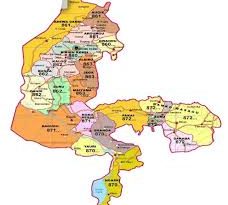Unveiling Three Simple Risk Management Strategies For Agribusiness Prosperity
By Akinjide Agosile
Leading and Lagging
Leading, in the context of agribusiness risk management, involves proactively making financial transactions based on strong indications that the market will move against you in the future. This strategy is particularly relevant when dealing with international transactions and currency exchange rates.
Consider a scenario where an agribusiness in Nigeria plans to import a crucial piece of equipment, such as a cocoa dryer or processing machine, from the United States, with the invoice quoted in USD. If there are compelling indications that the Naira is likely to weaken against the dollar in the coming months, the agribusiness may choose to swiftly purchase the required amount of dollars now. By doing so, the company can lock in the current exchange rate, potentially saving money compared to future higher rates.
Leading is not confined to currency transactions alone; it extends to the procurement of raw materials as well. For instance, if an agribusiness anticipates an imminent increase in the price of a crucial raw material, it might opt to buy a substantial quantity at the prevailing lower rate, thereby hedging against potential future price hikes.
This proactive approach allows agribusinesses to capitalize on their market insights and secure favorable terms before adverse changes occur.
On the flip side, lagging involves a deliberate delay in financial transactions to capitalize on anticipated favorable market movements. Agribusinesses might opt for lagging when they foresee strengthening in the exchange rates or a potential decrease in the cost of essential inputs.
Continuing with the earlier example, if the agribusiness expects the Naira to strengthen against the dollar soon, it may choose to delay the purchase of dollars. By doing so, the company can take advantage of the more favorable exchange rates, ultimately reducing the cost of importing the required machinery.
Similarly, lagging can be applied to raw material procurement. If an agribusiness believes that the price of a particular raw material is likely to decrease in the coming months, it may strategically delay purchases to benefit from the lower prices.
For Instance, the dollar to naira official rate on December 18, 2023, 04:00 UTC was 793.63 and is currently 1,582.49 on the 24th of February 2024, which shows a fall in the value of naira by 788.86 against the dollar (xe.com).
Let us say an agribusiness exporter received $1m on the 18th of December 2023 but has delayed the sale of the export proceeds by two months, this business would have made an abnormal profit of N788,860,000 just because it has employed lagging as a risk management strategy. This demonstrates how these simple risk management tools could help to increase a company’s profit margin.
Both leading and lagging strategies require a thorough understanding of market dynamics, and economic indicators, and a willingness to act decisively based on informed predictions. By incorporating these approaches into their risk management framework, agribusinesses can navigate volatile markets more effectively, ultimately safeguarding their financial stability and competitiveness.
Use of Forward Contract In the unpredictable realm of agribusiness, where factors like commodity prices, currency exchange rates, and interest rates can swing dramatically, a strategic approach to risk management is essential. One potent tool at the disposal of agribusinesses is the forward contract—a customized agreement that enables companies to lock in prices for future transactions.
A forward contract is essentially a pact between two parties, a buyer and a seller, to exchange a specified quantity of goods, services, or financial instruments at a predetermined price on a future date. This financial instrument is particularly advantageous in agribusiness, offering a means to hedge against potential fluctuations in commodity prices.
Consider a scenario where an agribusiness plans to sell 3,000 metric tons of cocoa beans in six months. By entering into a forward contract at $4,000 per ton, the company secures a fixed price, shielding itself from the uncertainties of the market.
However, the binding nature of forward contracts means that both parties must fulfill their obligations, which can lead to either gains or losses. For instance, if the market price for cocoa beans jumps to $4,300 in the future, the company faces a loss of $900,000 as it is obligated to sell at the agreed-upon price.
On the flip side, if prices drop to $3,700, the company stands to gain an additional $900,000. This example underscores the importance of a nuanced understanding of market dynamics before committing to forward contracts.
Forward contracts extend their utility beyond commodity transactions, proving invaluable in managing currency risks. In the realm of international trade, agribusinesses often face the challenge of fluctuating exchange rates. By entering into forward contracts, these businesses can lock in exchange rates for future transactions, providing a safeguard against potential currency depreciation.
For example, a U.S.-based agribusiness planning to export products to Europe can enter into a forward contract, ensuring a fixed exchange rate for Euros and shielding itself from adverse currency movements.
Interest rate risk is another challenge agribusinesses encounter, especially when dealing with financing and loans. Forward rate agreements (FRAs), a type of forward contract, come into play here. Agribusinesses can utilize FRAs to fix the interest rate on a future loan or investment, offering protection against unfavorable rate fluctuations.
In conclusion, forward contracts empower agribusinesses to navigate the volatility of the market by providing a mechanism to lock in prices for future transactions. Yet, success in utilizing these instruments hinges on a comprehensive understanding of the industry and market dynamics, ensuring that forward contracts align with the company’s risk management objectives.
Options Imagine your company is gearing up for a big international purchase, expecting to pay $500,000 in three months. But you are concerned about Naira weakening against the dollar in that time, ballooning your costs? Fear not, currency options might help you minimize this risk. Think of them like insurance for your future exchange rate. You pay a small upfront fee (premium) and gain the right, but not the obligation, to exchange at a predetermined rate (strike price) in the future. This rate acts as your safety net, no matter what the actual exchange rate might be.
Let’s say you need to pay $500,000 in three months, but the Naira could fluctuate. You could buy a put option with a strike price of 900 Naira per dollar. This guarantees you can pay your $500,000 at 900 Naira per dollar, even if the actual rate soars to 1050. You have shielded your budget from the storm as a result. The main benefit is its flexibility as the company is not forced to sell if the dollar appreciates beyond your strike price (the guaranteed rate). You can still benefit from a stronger Naira!
Your maximum loss is capped at the premium you paid upfront, regardless of how much the exchange rate plummets. It also has a few costs associated with it. Remember the premium? It’s the price of your shield, and it eats into your profits. Higher volatility in the market generally means higher premiums. Options can be tricky to navigate. Consult a financial advisor to make sure you’re choosing the right ones for your needs.
Agosile contributes this piece through Jideagosile@aol.com




